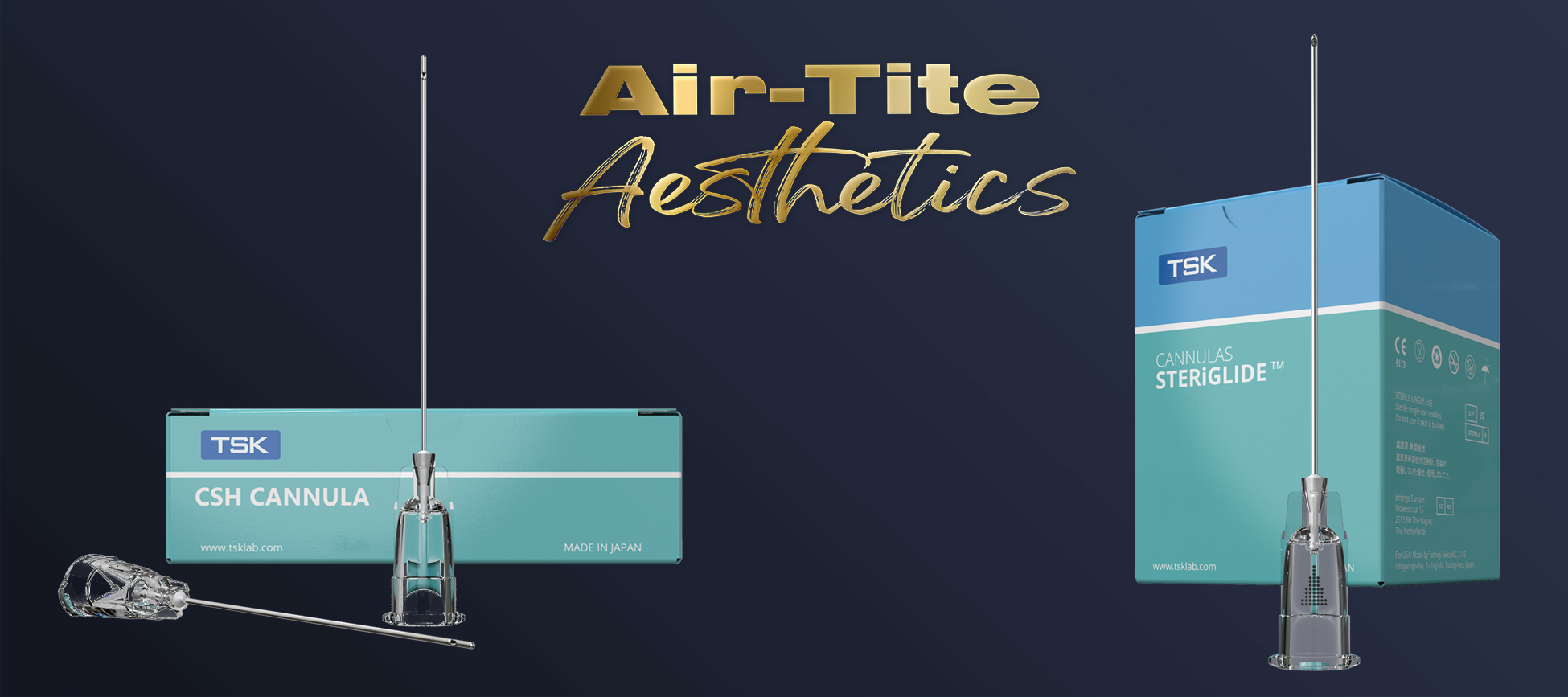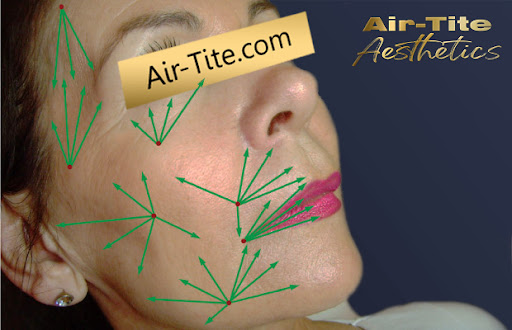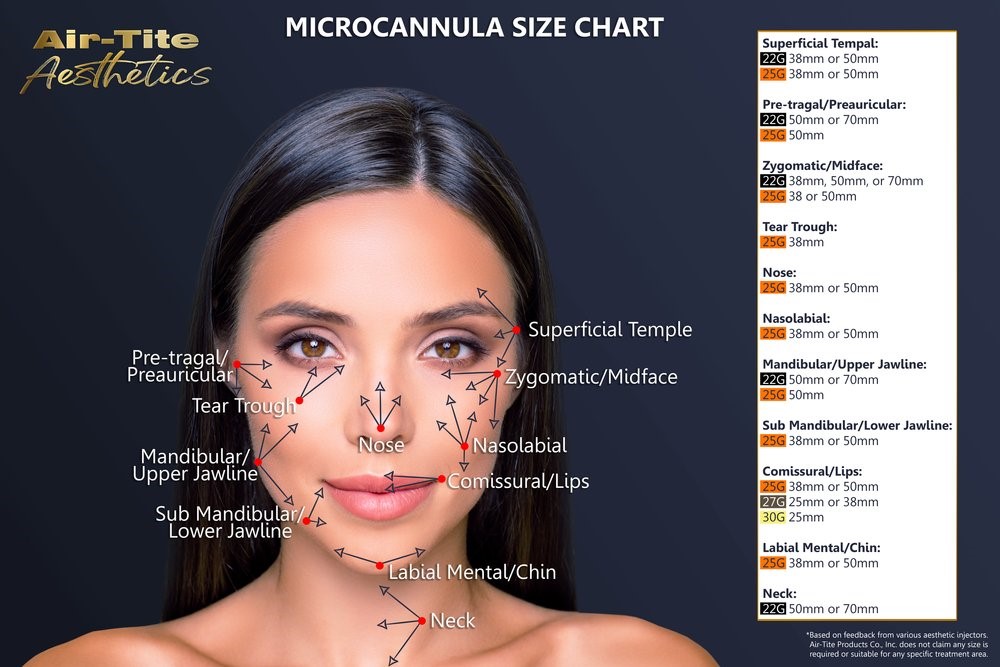
In the past, dermal fillers were primarily used for wrinkle correction. In recent years, many plastic surgeons and Med Spas are now using them for three-dimensional volumisation of the facial areas. This requires deeper planes and larger areas of the face to cover.
Microcannulas can offer a distinct advantage over a traditional needle as they’re able to cover a greater surface area with a single puncture hole. This offers the patient an improved experience with fewer chances of bruising, swelling, or bleeding.
Read on to learn more about the benefits that microcannulas offer along with the top injection spots where surgeons and Med Spas are seeing the greatest results.
Before we talk about the top spots where microcannulas have an advantage over a traditional needle, we need to first look at the most important aspect of filler injections: the patient.
Traditional needles often require multiple puncture holes and this can lead to a degraded patient experience—most take it with a grin-and-bear-it attitude, but at the end of the day, it’s still not a pleasant experience.
Microcannulas offer the ability to perform filler work with fewer injection sites. That leads to less bleeding, pain, and potential for bruising. Using cannulas instead of needles also reduces the risk of vascular occlusions.
Many patients will meticulously plan their filler injection appointments on the off chance they’ll experience bruising, which can lead to anywhere from three days to two weeks of social downtime.
It stands to reason that a happy patient is a recurring patient and one who will gladly tell their friends and family about the positive experience they had at your clinic.
When compared to a traditional needle, microcannulas have a longer reach, fewer insertion points, and the ability to fan the cannula in different directions without changing the entry port. This offers a significant advantage over using multiple needle sticks to cover the same area.
Some areas are more amenable to cannulas, while others may have a higher risk of vascular occlusion. However, there is an overall lower risk of vascular occlusion with cannulas when compared to traditional needles.
Joe Niamtu III, DMD, recently published a paper in the Dermatologic Surgery Journal that looked at optimal filler injection sites when using microcannulas. He found that:
“Because these cannulas are bigger than needles and blunt, they are not optimal for intradermal injections. The use of the injection cannulas for fillers is more applicable to areas of deeper injection such as the middle of the lip, tear trough area, and the midface and jowl regions. These regions are traditionally treated in the deep dermal or subdermal plane and require “inflation” as opposed to the more precise intradermal micro-volume filling of individual rhytides.”
In addition to the lips, tear troughs, and midface regions mentioned by Dr. Niamtu, dermatologist Dr. Marina Landau claims that temples, the forehead, cheeks, and marionettes are commonly treated areas that also require “inflation” best achieved with a cannula filler treatment.

We recently surveyed several plastic surgeons and Med Spas and asked them to provide a brief testimonial on various areas where they find microcannulas to offer an advantage and why. This is what they had to say:
“It is essential for every TOP injector to use microcannula. I use the awesome Air-Tite microcannulas nearly everywhere- cheeks, nasolabial folds, marionette lines, submalar areas, and jawlines. I estimate I get 80% less pain, less swelling, and less bruising than needles- microcannulas are much safer to inject fillers. I only use needles in the temporal fossa, deep periorbital lines, and scars.”
Garry Lee, MD
Look Younger MD Medical Spa
Henderson, NV
“When used both gently and thoughtfully, the safety provided by microcannulas is unparalleled. Our patients have less discomfort, less bruising, and less adverse events than with needles, which provides a win-win situation. I use them almost 100% of the time”
Lori Robertson
MSN FNP-C
Skin Perfect Medical Aesthetics
Brea, CA
"I most commonly use cannulas for lower face filler treatments and exclusively reach for cannulas when doing body injections. Cannulas provide a safer and more comfortable treatment for my patients as well as less downtime after injections."
Deb, Nurse Practitioner
Boston, Massachusetts
“We use microcannulas anywhere safety is especially warranted. We find them advantageous, as they’re less likely to bruise the patient and are a more comfortable experience, overall.”
Gerald Pierone, Jr. MD
One Aesthetics Medical Spa
Winter Park, FL
“TSK STERiGLIDE microcannulas allow for an incredible patient and injector experience; Smooth, seamless product administration.”
Justine Roberts
MPAS, PA-C, RVT, MBA
25 gauge cannulas are currently our best-selling size due to their versatility (uses across most of the facial regions) along with their ability to be utilized with the widest variety of fillers. For facial injections, wider gauges (22G/25G) are often used for the more viscous (thicker) types of hyaluronic acid and to access deeper planes.
These sizes have increased in popularity as the trend for safety has continued to gain importance. Thinner gauges (27G/30G) tend to be used for the less viscous fillers on a very superficial plane.
Below is a graphic showing recommended microcannulas sizes based on the location of use.

You can read more about choosing a microcannula here.
While traditional needles still have their place in non-invasive treatments, microcannulas can offer superior performance in specific areas and can have fewer side effects.